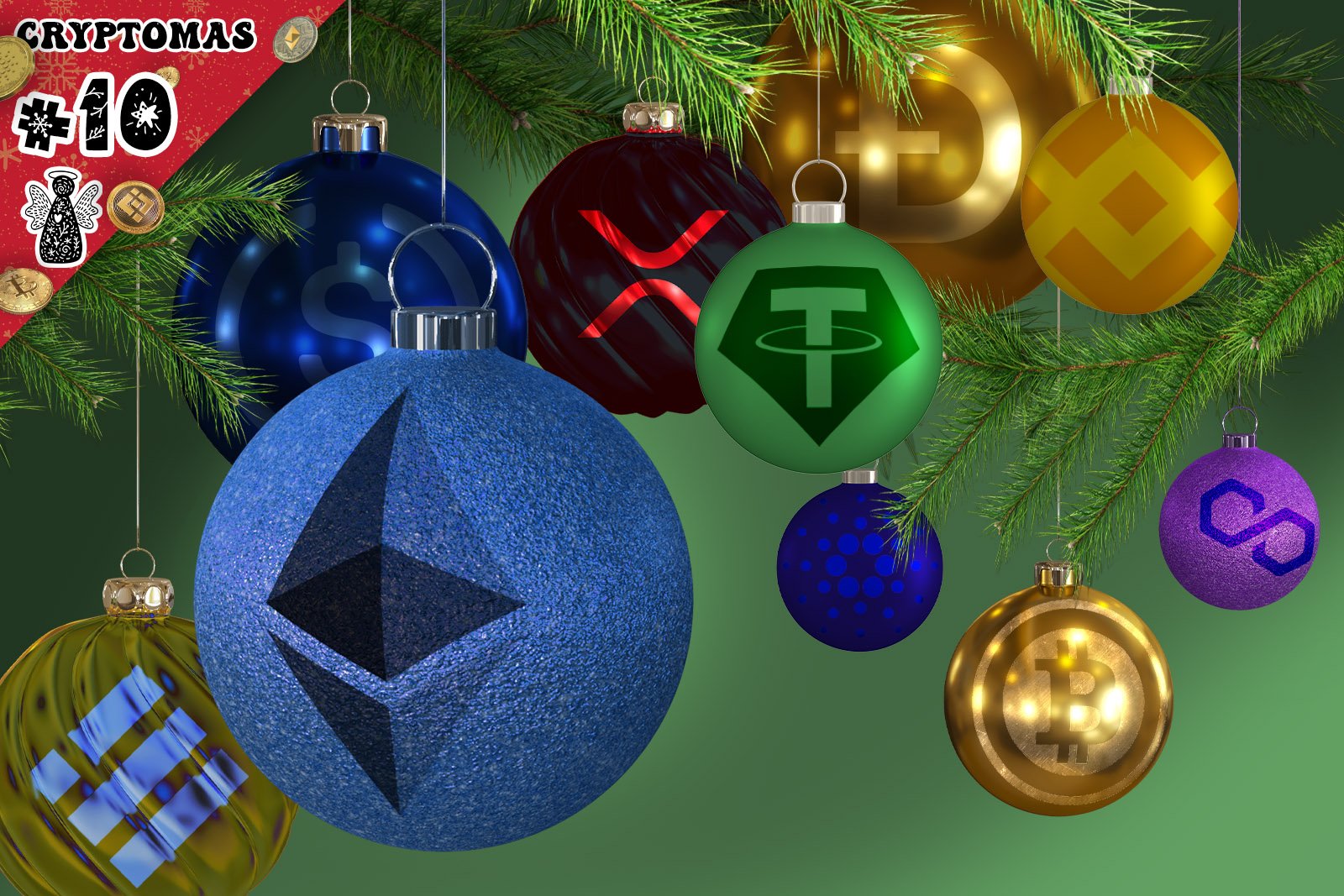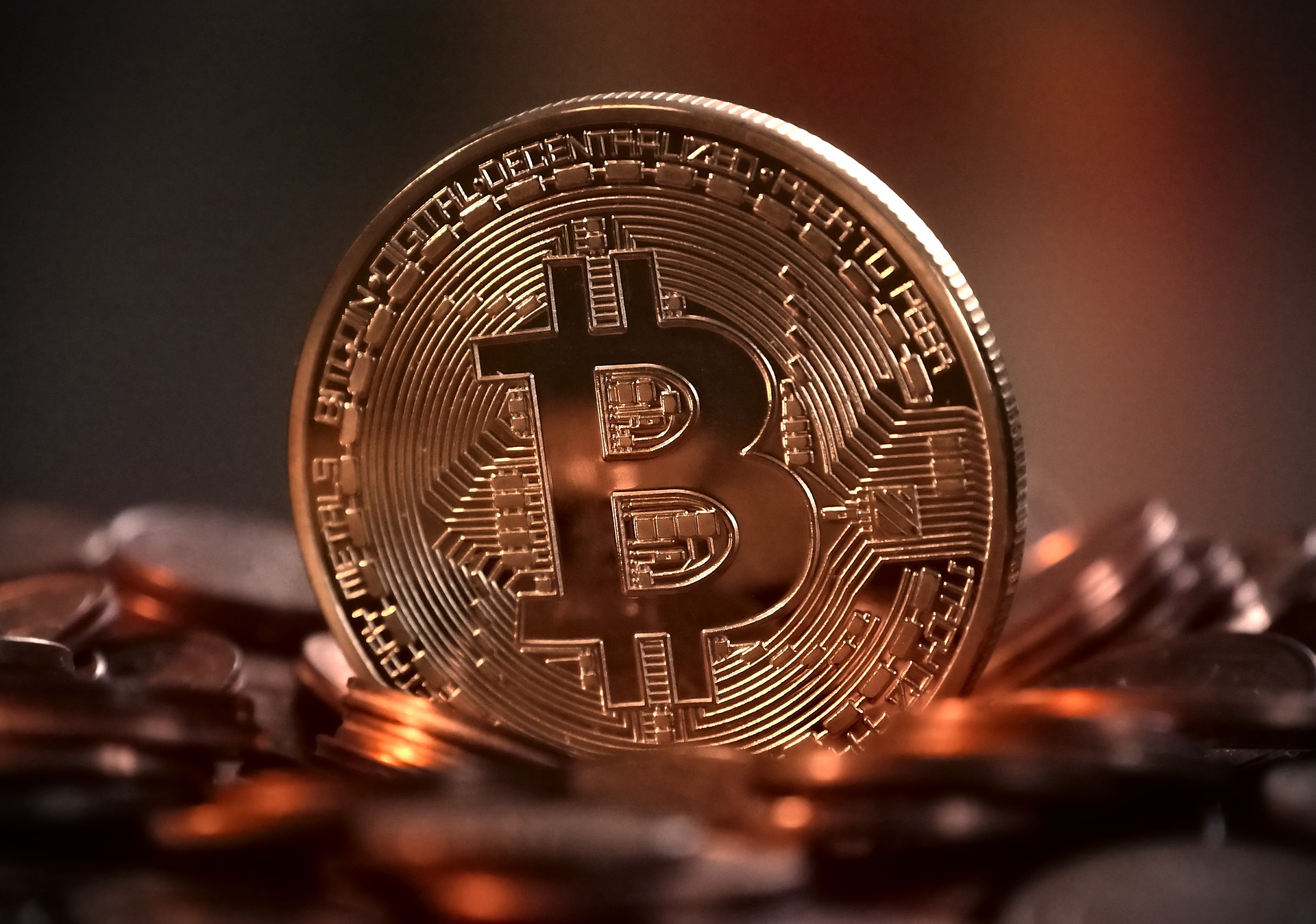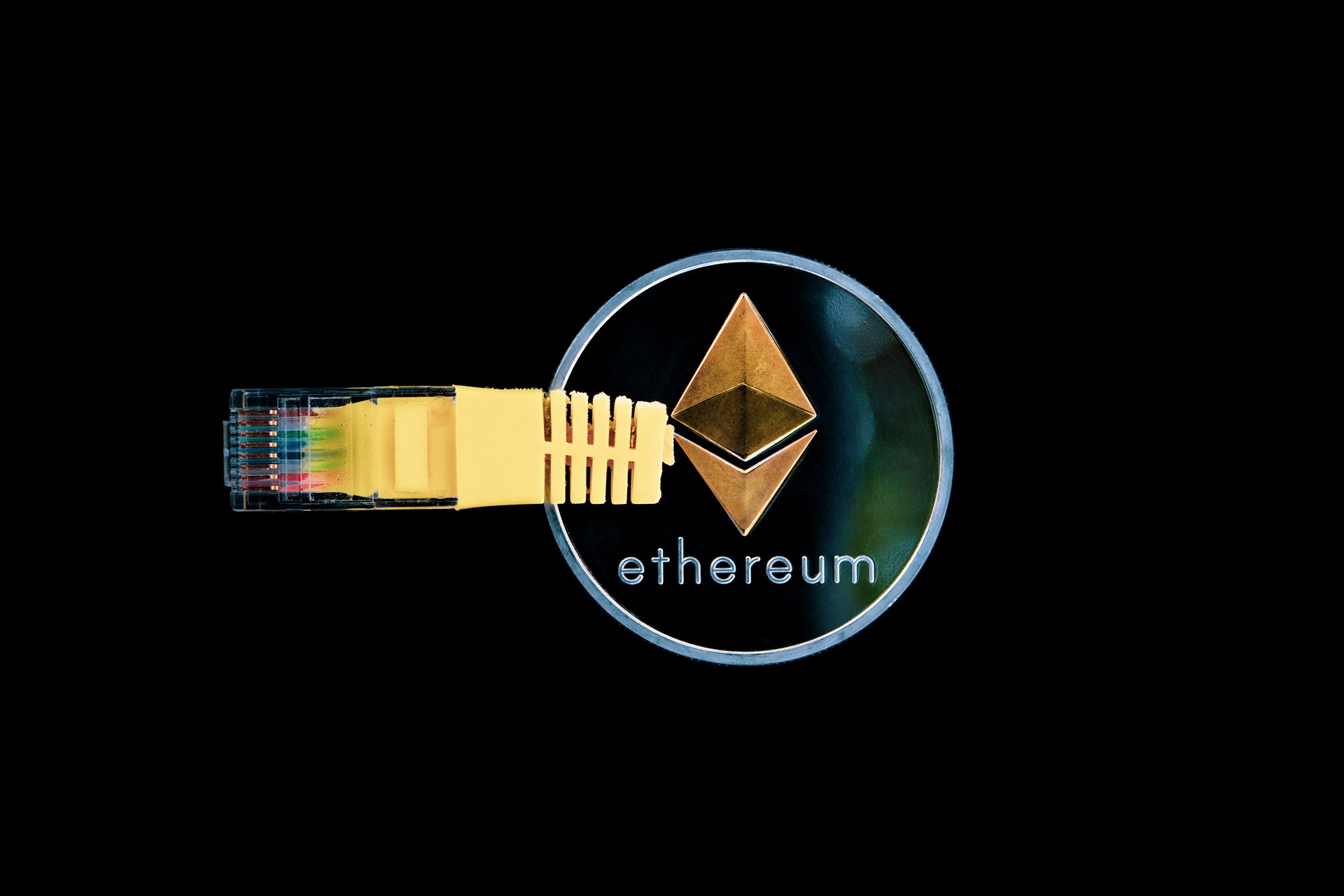
It seems only right that for the tenth day of Cryptomas we should bring you a “top ten” list. That being the case, there couldn’t be a more perfect choice than to overview the top ten cryptocurrencies ranked by market capitalization. These titans of the industry set the tone for all of crypto, and understanding their place is also sure to set the tone for a contented Christmas period for all enthusiasts.
In order the understand the monumental task these networks faced in claiming the coveted positions, it’s important to acknowledge the events that shaped the industry this year.
A Brief Recap of 2022
In November 2021, Bitcoin and much of the industry reached an all-time high, gracing heights of around $69,000. In high spirits, enthusiasts and analysts predicted that Bitcoin would swiftly surpass a price point of $100,000 in 2022.
Sponsored
However, those estimates were quickly dashed, as it was apparent that the year’s keyword was “downturn.” For the sake of brevity, one can follow the progress of Bitcoin, as the industry’s performance often lives and dies by the leading asset.
BTC fell through support after support level, and though the “digital gold” briefly rallied to $47,454 in March, it proved not to be enough of a buffer, with losses taking over again. As it stands, Bitcoin is worth just $17,676 at the time of writing, a far cry from its lauded all-time high.
What was responsible for this? Many would argue that it was unavoidable due to the extremity of events this year.
Sponsored
In February, Russia invaded Ukraine in an occupation that continues today. The resulting sanctions dramatically impacted stock prices, inflation, energy prices, and more, forcing the U.S. FED into drastic measures. Any single one of these could have impacted the industry, with BTC becoming more intrinsically linked to the stock market
In May, Do Kwon’s Terra Luna imploded, losing investors $60 billion and shaking the entire industry, leading to established firms such as 3AC and Voyager Digital filing for bankruptcy. The event had a ripple effect that is still being felt today, and many argue that it was responsible for the bears getting their claws into the market.
Then, just as the industry seemed to be recovering, Sam Bankman-Fried’s crypto exchange FTX faced a scandal on a massive scale, with the previously leading exchange capitulating under the weight of the revelations.
Though the repercussions from these trials still resound, crypto is far from done, and the top ten assets by market cap will play a significant role in deciding its future.
Without further ado, let’s see how each of those projects fared this year.
1. Bitcoin (BTC)

Of course, we’ll start with the most influential cryptocurrency of them all, Bitcoin.
Bitcoin is the leading cryptocurrency and the most popular one as well. The creation of Bitcoin in 2009 kicked off the age of crypto and led to the creation of the alternative assets economy. It’s not a stretch to say that the crypto economy would not exist without it.
At press time, one BTC is worth around $17,676, and the coin has a market cap of around 326 billion. Bitcoin has had a tough year and has lost around two-thirds of its value since the beginning of the year. Despite that, BTC is still atop the crypto leaderboard and worth more than it was at the beginning of the current bull run.
This means that, even amidst all the FUD and stoic bears, those who bought Bitcoin in March 2020 are still at least 200% up on the value of their investment.
2. Ethereum (ETH)

If Bitcoin is the most important asset in the crypto landscape, Ethereum is undoubtedly the second most important. One of the reasons why Ethereum is so important is that it’s a fundamentally different ecosystem from Bitcoin.
Contrary to Blockchain, Ethereum is an everything network. Its premise is that it can be used for stocks, pictures, and even game tokens.
Complementing this, the ease of use of Ethereum Blockchain scripts makes building dApps readily accessible for developers. These dApps are applications with their data centers in the blockchain, allowing for in-app transactions on a decentralized database.
Another thing that makes Ethereum distinct from Bitcoin is its verification model. Ethereum recently moved from a Proof of Work (PoW) model to solely Proof-of-Stake (PoS), drastically reducing the blockchain’s energy consumption.
Like most cryptocurrencies, Ethereum has had a turbulent year, but it has emerged largely unscratched as the second-largest cryptocurrency by market cap and is unlikely to lose its position. Nevertheless, one ETH was worth around $4,000 in January but has fallen in the last eleven or so months to a value of around $1,242 at the time of writing, with a market cap of $156 billion.
3. Tether (USDT)
When the crypto ecosystem started to pick up steam in the 2010s, the concept of stablecoins was little more than a fringe idea. However, as the market underwent bear and bull runs, a stablecoin that maintains a consistent value became more attractive.
Tether was one of the very first stablecoins, starting in 2014. Tether is pegged to fiat, which means that one Tether will always equal one U.S. dollar, achieving this ratio by always having a reserve dollar for every Tether minted.
As a fiat stablecoin, the price of Tether does not fluctuate. One Tether was worth one dollar in January, and it’s also worth one dollar today. Still, that stability is something the industry desperately needed as algorithmic stablecoin Terra (UST) crashed and burned in May. Despite being “less” valuable than other assets, Tether holds a $65 billion market cap.
4. Binance Coin (BNB)
BNB stands for Binance coin and is the native coin of the Binance blockchain. It was originally based on the Ethereum blockchain and was created as a utility token for discounted trading fees.
BNB made this list because Binance has a policy of utilizing a 5th of its profits to purchase the coin and burn it to keep scarcity up and thus maintain the coin’s value in relative terms. Nevertheless, the last Binance burning event happened in October 2022, and the coin’s prices did not drastically improve but continued to trend downwards as the crypto market deteriorated.
In January, BNB was worth around $600. Because of the tremors of the crypto winter, it has lost around ⅔ of that and is now worth around $269.
Interestingly, Binance doesn’t own or control the BNB chain, as it transitioned to a permissionless, decentralized crypto ecosystem.
5. USD Coin (USDC)
The USD Coin is another stablecoin that is pegged to the United States Dollar. The coin is managed by a consortium named Centre, which was established by Coinbase and Circle. Like most stablecoins, USDC is issued by a private entity and is therefore not directly associated with the United States.
Centre, the consortium that issues USDC, claims that the coin is backed by dollar reserves that are equal to the amount of USDC on the market. The coins reserves are regularly attested by Grant Thornton, LLP, and these attestations can be found on Centre’s website. However, these attestations are not to be mistaken for audits.
Today, one USDC is still equal to one dollar, just as it was in January. The market cap of the coin is around $42 billion, although the stablecoin has been a central part of the “stablecoin war”, with Coinbase committing to converting all USDT into USDC, while Binance prefers USDT. Circle was further involved in controversy towards the end of the year, when Binance halted USDC withdrawals in order to stabilize its reserves.
6. Binance USD (BUSD)
Binance USD is a Binance stablecoin issued by Binance and Paxos. Like USDT and USDC, Binance is backed by dollar reserves.
Theoretically, this means that one BUSD will always be worth one dollar since one can always exchange the coin for one dollar at any time. The party responsible for holding on to these reserves is Paxos—is a regulated financial institution. Binance, on the other hand, manages the day-to-day operations of the token. This means that Binance is in charge of listing the coin, and providing customer support whenever needed.
Like all stablecoins on this list, BUSD has remained fairly stable from January till now. The coin has retained its 1:1 peg with the dollar and has a current market cap of around $21 billion.
7. XRP
XRP has had a rough couple of years, and things could get even worse for the token. However, despite its recent troubles, the coin has managed to retain the trust of its investors.
In 2020, the SEC initiated legal proceedings against Ripple, alleging that it had used the sale of unregistered XRP tokens, which the SEC asserts to be a security, to raise money illegally in violation of securities law. The crypto industry is watching the case with great interest, as the outcome could set a precedent for future regulation in the space.
Despite some wins here and there in the case, the suit has plagued XRP, and its price has suffered ever since. Right now, one XRP is worth $0.3958, and its market cap has fallen from 44 billion at the beginning of the year to less than 20 billion.
8. Dogecoin (DOGE)
Dogecoin is the largest meme coin by market cap and is a living testament to just how far the power of hype can go. Before 2021, Dogecoin had only once reached 2 billion dollars in market capitalization. In fact, on January 1st, 2020, the coin had a market capitalization of less than $500 million.
However, for some reason, Elon Musk started posting about getting the coin to the moon, and Dogecoin’s price skyrocketed.
While Dogecoin has seen a significant reduction in value due to the crypto winter, it is still comfortably above its pre-2020 valuation. Today, one Dogecoin is worth $0.3958 and has a market capitalization of around $12 billion.
9. Cardano (ADA)
Cardano is somewhat like Ethereum. It’s a blockchain designed to be a flexible, sustainable, and scalable chain for running smart contracts. Its goal is to be the most sustainable blockchain platform and utilizes the Proof of Stake (PoS) consensus mechanism.
Cardano’s native token, $ADA, can be bought and traded on exchanges like Binance and holds a value of around $0.316 at press time. Despite a slew of positive developments, including the launch of smart contracts on the network, the coin has suffered a significant loss this year, sliding from its dollar price point recorded in January 2022.
The market capitalization of $ADA stands at an approximately $10 billion—a substantial drop from the $40 billion at the start of the year.
10. Polygon (MATIC)
Polygon, formerly known as the Matic network, is a Layer-2 scaling solution built on the Ethereum blockchain. Although founded in 2020, Polygon now hosts around 53,000+ decentralized applications (dApps) and welcomed a host of new projects needing a new home after the Terra LUNA disaster. This year, the project has been a bright spot for the crypto market, furthering adoption by signing partnerships with big names such as Starbucks and Adidas. These developments ultimately played a positive role in helping MATIC to flip Solana and take control of the #10 spot.
The network’s native token, $MATIC, is worth around $0.9318 and has approximately $8 billion market capitalization.
On the Flipside
The volatility of the crypto industry, made particularly evident this year, causes rapid price fluctuations in the cryptocurrency market. Often the success of a project is determined by market conditions outside of a project’s control, such as with the Terra/Luna debacle.
Why You Should Care
The market’s best performers will inarguably exert massive influence over the industry. For enthusiasts seeking mainstream adoption, keeping up to date with its leaders is crucial to understanding its future.
Read more of our holiday feature series:
12 Days of Cryptomas
Find the previous iteration in the series here:
Ladies Leading – Women in Crypto Take the Spotlight
